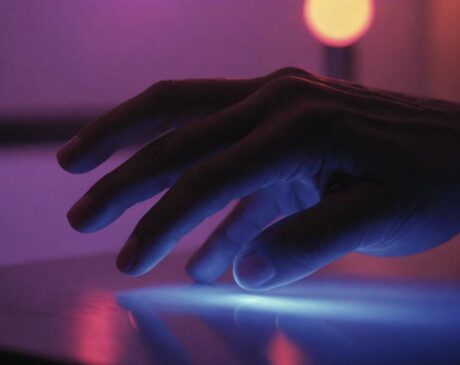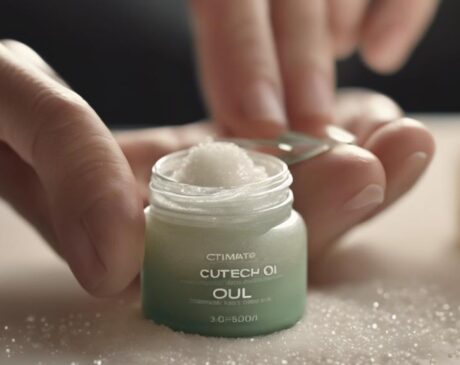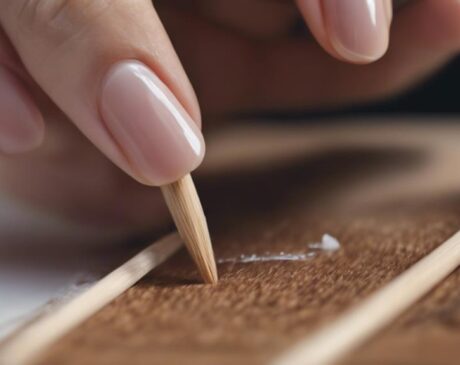Why are press-on nails bad?

Press-on nails are artificial nails made of plastic material designed to stick to the surface of natural nails. They offer a convenient and cost-effective way to achieve a sophisticated look without the time-consuming trip to the salon. Press-on nails are available in a wide range of styles, from French manicures to sophisticated designs to suit every aesthetic preference.
Popularity and Common Usage
Press-on nails have skyrocketed in popularity, especially for those seeking a salon-quality look for special occasions or as a time-saving beauty technique. They are especially favored by those who don’t want to spend hours at the nail salon or are looking for temporary nail enhancements.
Composition of Press-On Nails
Understanding the composition of press-on nails is critical to assessing their potential risks.
Materials Used in Manufacturing
Typically, press-on nails are made from plastic materials such as acrylic resin or ABS (Acrylonitrile Butadiene Styrene). These materials are chosen for their durability and flexibility, allowing the nails to mimic the look and feel of natural nails.
Chemicals and Their Potential Hazards
The manufacture of press-on nails involves a variety of chemicals, including adhesives and plasticizers. These substances may be harmful if inhaled or in prolonged contact with the skin. Adhesives used to hold nails in place may also contain strong chemicals that may weaken natural nails over time.
Health Effects of Press-On Nails
While press-on nails are convenient, they can have some negative effects on nail health.
Short-term Effects on Nail Health
The immediate effects of using press-on nails include weakening, brittleness, and thinning of the natural nail. Adhesives can strip away the natural nail layer and cause damage.
Long-term Risks and Allergies
Prolonged use of press-on nails may lead to more serious problems.
Skin Irritation and Allergic Reactions
Chemicals in adhesives and nail materials can cause allergic reactions such as redness, itching, and swelling around the nail. In some cases, these reactions can be severe and require medical attention.
Fungal Infections
Residual moisture between press-on and natural nails can create an environment conducive to fungal growth. If left unaddressed, this can lead to infections that may require treatment.
Environmental Concerns
The environmental impact of press-on nails is often overlooked.
Non-Biodegradable Materials
Most press-on nails are made of non-biodegradable plastics that cause environmental pollution. These materials do not decompose easily, leading to long-term waste in landfills.
Pollution from Production and Disposal Processes
The production process of press-on nails emits harmful chemicals that cause air and water pollution. In addition, the disposal of used nails (usually in landfills) adds to the environmental burden.
Economic Considerations
The economics of using press-on nails as compared to traditional manicures is an important factor to consider.
Cost Comparison with Traditional Manicures
At first glance, press-on nails appear to be a more economical option when compared to salon manicures. Purchasing a set of press-on nails is a fraction of the cost of a professional manicure. However, this cost-effectiveness can be deceptive when considering the long-term financial implications.
Hidden Costs and Reuse
The initial lower cost of press-on nails can be offset by hidden costs. The need for regular replacement, especially if the nails are frequently worn, may increase. The cost of nail glue, nail polish remover, and other accessories needed for application and removal must also be considered. Over time, these costs will accumulate and may exceed the cost of occasional professional manicures.
Limitations of Nail Care and Maintenance
In addition to the economic issues, there are practical limitations to press-on nails.
Difficulty in Maintaining Nail Hygiene
Press-on nails can make maintaining proper nail hygiene difficult. The space between natural and artificial nails can accumulate moisture and bacteria, increasing the risk of infection. Regular and thorough cleaning is necessary, but it is difficult to do this without moving the nails.
Limitations on Nail Growth and Health
The use of press-on nails can also hinder the natural growth and health of nails. Pressure and adhesives can weaken the nail bed, resulting in slower nail growth and potential damage to the natural nail structure.
Aesthetic Drawbacks
While press-on nails are popular for their aesthetic appeal, there are some drawbacks to consider.
Unrealistic Expectations
Press-on nails may create unrealistic expectations about the appearance of nails. The perfection and uniformity offered by artificial nails are often unattainable with natural nails, which may lead to dissatisfaction with the appearance of natural nails.
Limitations of Design and Customization
While there is a wide range of designs available, press-on nails have limited customization capabilities. Unlike professional manicures that can be customized with designs based on personal preferences and nail shapes, press-on nails come in standard sizes and designs that may not suit everyone’s tastes or nail type.
Other Nail Care Options
With these drawbacks in mind, it is worthwhile to explore healthier and more sustainable nail care alternatives.
Healthier Nail Enhancement Techniques
Options such as gel or dip-powder manicures may be healthier choices. These methods, when applied and removed correctly, can minimize damage to natural nails. In addition, choosing the services of a certified professional can ensure that your nails are properly cared for.
Natural Nail Care Tips
Embracing natural nail care is another viable option. Regular trimming, filing, and use of nourishing oils can keep your nails strong and healthy. Using non-toxic nail polish and removers also helps keep nails healthy. Adopting a balanced diet rich in vitamins and minerals contributes significantly to nail strength and growth.
Expert Opinion and Research
In order to fully understand the impact of the use of press-on nails, it is important to consider expert opinion and research findings in the field.
Dermatologists’ Views
Dermatologists often warn against the frequent use of press-on nails. Their concerns center on the potential for nail damage and skin reactions. The adhesives used can cause nails to become thin, brittle, and sometimes lead to severe allergic reactions. Dermatologists recommend moderate use of press-on nails and urge users to give natural nails time to breathe and recover between uses.
Research Findings on Pressed Nails
Research into the field of nail products, including press-on nails, has highlighted a number of concerns. It was found that long-term use of these products can lead to weakened natural nails, an increased risk of fungal infections, and the possibility of allergic contact dermatitis. The study emphasizes the importance of using these products with caution and proper nail care.
Summary of Key Points
This article delved into various aspects of why press-on nails may be considered bad. It covered potential health effects, such as short- and long-term nail damage and allergic reactions, as well as environmental concerns related to the non-biodegradable materials used in production. Economic considerations, limitations of nail care and maintenance, and aesthetic drawbacks are also discussed. Dermatologist insights and research findings further emphasize the need for careful use.
Final Recommendations
Considering the potential risks and drawbacks, it is recommended that press-on nails be used in moderation. It may be beneficial to prioritize the health of natural nails and consider other nail care options. Maintaining good nail hygiene and taking regular breaks to allow natural nails to recover are vital when using press-on nails. If you experience any adverse reactions, it is recommended to consult a dermatologist.
Frequently Asked Questions
1. Are press-on nails safe for all ages?
Press-on nails can be used by people of all ages, but caution is advised, especially for children and teenagers. Their nails are still developing and the chemicals in the adhesive may be more harmful to them. It is important to monitor for any signs of allergic reactions or nail damage.
2. How long can I use press-on nails without harming my natural nails?
It is recommended to limit the use of press-on nails and allow at least a couple of weeks between applications. This interval helps maintain the natural health of your nails and reduces the risk of damage.
3. What are the signs of an allergic reaction to press-on nails?
Signs of an allergic reaction include redness, itching, swelling, or discomfort around the nail area or cuticle. If you experience any of these symptoms, it is recommended that you remove your nails immediately and consult a healthcare professional.
4. Are there environmentally friendly alternatives to traditional press-on nails?
Eco-friendly alternatives include biodegradable nail covers or press-on nail covers made from sustainable materials. In addition, choosing natural nail care options can reduce your environmental impact.
5. Can press-on nails lead to long-term nail damage?
Yes, frequent and prolonged use of press-on nails can lead to long-term damage such as nail thinning, brittleness, and susceptibility to infections. It’s crucial to use them sparingly and maintain proper nail care.




